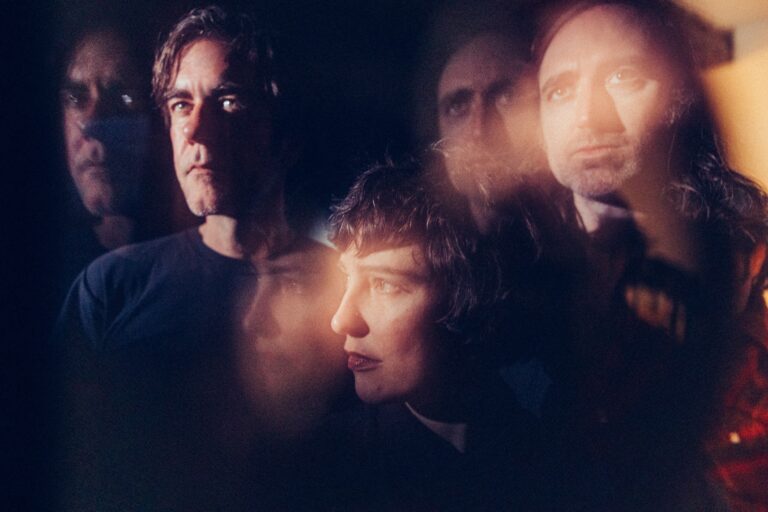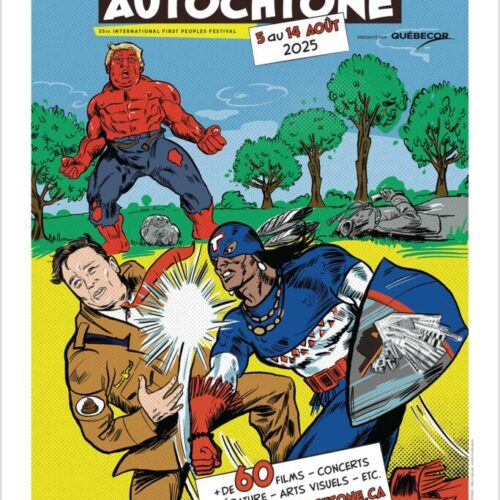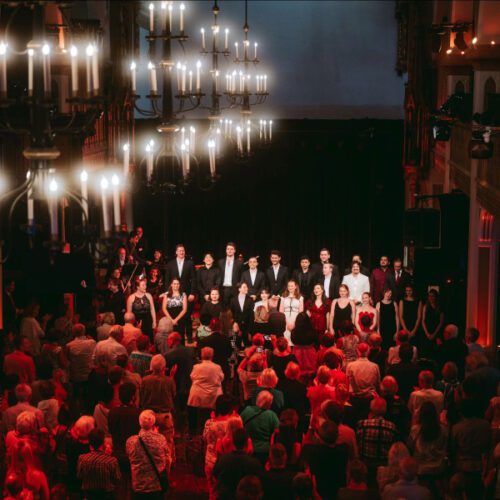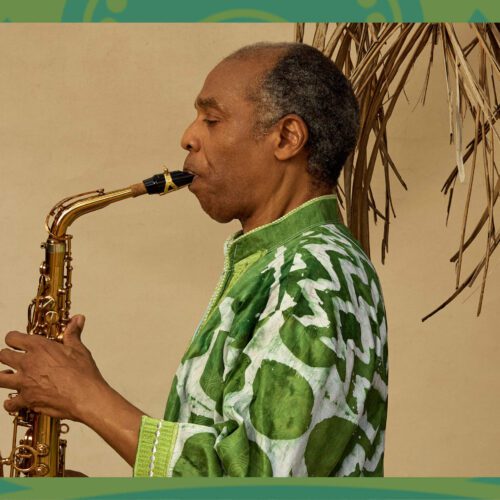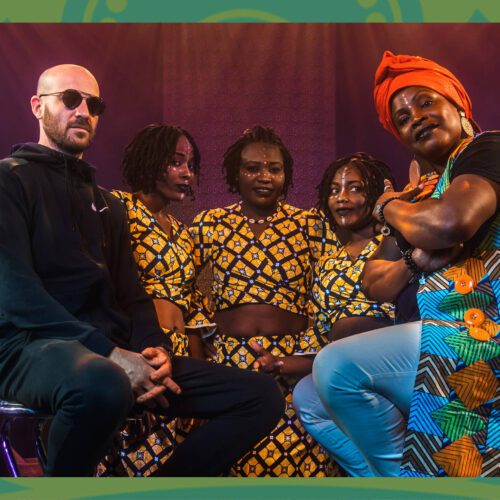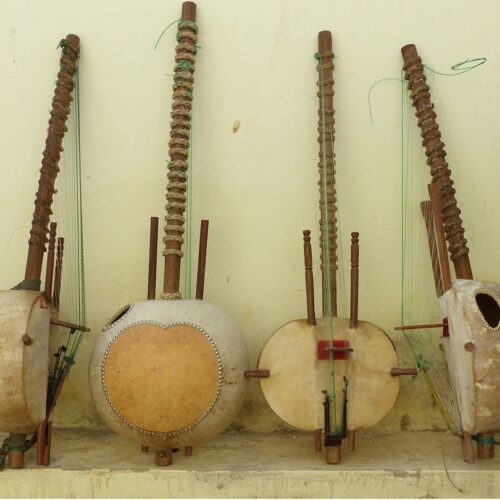Additional Information
In a phosphorescent haze of a crumbling dream, A Place to Bury Strangers returns to Montreal this week—not as a band, but as a transmission from some rogue frequency where noisy shoegaze dissolves into pure electricity. Their new album, Synthesizer, is a neon-lit séance where analog ghosts wrestle with digital demons in a cathedral of blown-out amplifiers. Each track is a synapse firing backward, a glitch in the fabric of noise that rewires your nervous system into a conduit for their apocalyptic lullabies. Founder of the band, Oliver Ackermann’s guitar howls like a dying satellite and his vocals croon like a petrifed ghost, but now, the synthesizers rise—cybernetic serpents whispering and screaming in binary code.
The physical album cover for A Place to Bury Strangers’ Synthesizer isn’t just an image—it’s a portal, a circuit board disguised as a Rorschach blot, pulsing with latent noise. The album packaging can be turned into an instrument wired directly into the album’s nervous system, a tactile hallucination where the art plays you. This is not hyperbole for dramatic effect. Along with his pedal company, Death By Audio, Ackermann actually laid out the schematic for the synthesizer used on the album, on the front and back of the album gatefold, and with a good knowledge of soldering you too can create this noise machine.
Ahead of their date in Montreal this week, we spoke with Oliver about the new album, destruction and playing every show like it’s his last in the world, and his love for new, sometimes impossible to use sounds.
PAN M 360: You’ve had your pedal company, Death By Audio, basically just as long as you’ve been making music with A Place To Bury Strangers. You use some of these pedals and gear on tour, so has the company always gone hand in hand with the band for you?
Oliver Ackermann: Totally. One of the great things about having this pedal company as well as the band is it’s this focus to find these sounds and these noises all of the time. And that’s what’s so exciting, is searching for these things to discover ‘Oh how can we create these’ and ‘How can we twist the boundaries on these and create this like from the scientific perspective?’ And then from the musical perspective, it’s like you want to create these things to create more music. So it just kind of keeps everything like sort of thrilling. They like kind of feed off of each other. Even the new technologies that are kind of always sort of coming out, you can constantly sort of get excited behind these things and try to experiment. The rate of technology just makes it so wild. Like, if you were to get tired of analog circuits, like even digital programming, it’s just whole other worlds of all of this stuff. I love it.
PAN M 360: Yeah and I mean your band is known as the loudest in New York and and having these intese walls of noise and sound, but have you ever created something and gotten to a point where you’re like, ‘Maybe this is too much noise or ‘This is too crazy?’
Oliver Ackermann: Man, that happens all the time! There are pedals that I won’t use, that we create and we sell at Death By Audio because I’m like, this is just too insane for this part. But it’s also based on like, you know, your own personal preferences. I still can see the value of these things for somebody else and what their music is, you know? And that’s why we kind of created it because you’re like, ‘Oh, this is like really awesome and I think the world should have this,’ but then it also goes in the other hand too. I can create things something like maybe even dangerous or doesn’t really sound that good to other people, but I love it and I can use it.
PAN M 360: Going off that, this new album, Synthesizer, the actual physical album can be turned into a synthesizer. Can you tell me how the hell you had that idea and how you implemented it?
Oliver Ackermann: I think it was around 10 years ago. I was looking at circuit boards and just thinking, ‘Man, these are so beautiful,’ like just as art. So I was like, this needs to be an album cover sometime. I didn’t even have the idea of turning it into something you could build then. And then, we’ve been building all of these synthesizers for ourselves to go on tour in like guitar cases or something, so you can save the weight of cost on air flights. So we’ve had a bunch of weird synths in like cases and then it all kind of clicked and I was like ‘What if you could actually build and synth from a circuit board on a album cover?’ And then I had another thought about playing the synth on all tracks of the record. So you can build this crazy noise synth and not many people have a project like this that sounds so fucked up (laughs). I guess I wanted to break the boundaries of what these sorts of things are.
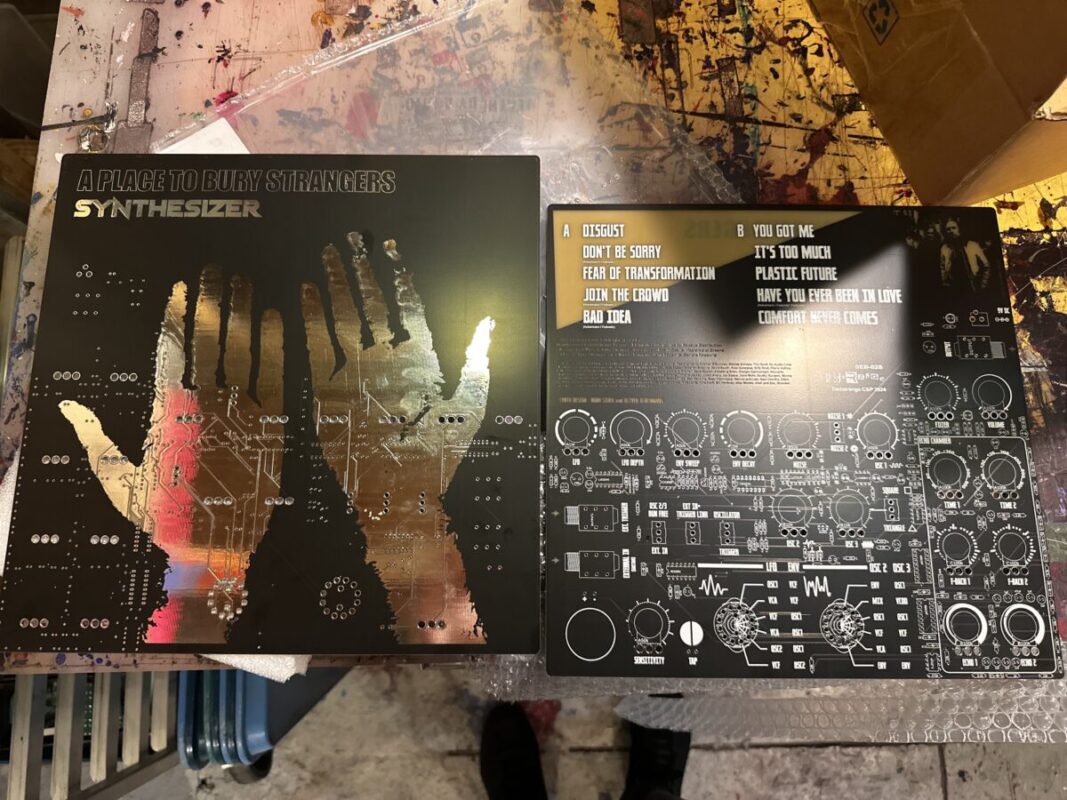
PAN M 360: And anyone can build this? Like do you need to know how to build synths?
Oliver Ackermann: It’s definitely an advanced project (laughs), for people who like to do meticulous soldering, and you can easily solder together so many things that shouldn’t be connected. But even if you mess up, you get a custom synthesizer that works a bit! I think I’ve even converted a few people who have just come down to Death By Audio sometimes and just saw how much excitement there was around this project. It’s like you’re hanging around with your friends, you’re soldering a bunch of stuff together to make sound and noise. What more could you want to do?
PAN M 360: Are you already kind of like on with the next thing too? I mean, since the record came out in like October, are you already on the next trajectory for another album or EP or something?
Oliver Ackermann: Yeah, totally. Like I have this spreadsheet where I like, maybe I wrote like what I thought were maybe like 45 good songs or something like that. And then we were starting to book, a bunch of these like fly-in shows, and we’re starting to book this like studio time with like friends who are kind of like engineering in different places. I think we’re just gonna like, probably write songs in these different studios and capture those moments.
PAN M 360: That’s a cool approach. Do you believe that the space or the essence of the space that you decide to record in kind of gets baked into the song or the record?
Oliver Ackermann: I mean, all these things must influence it. Microphones sound different and these spaces, it’s your body in this weird moment trying to improvise and not fuck up but then maybe a mistake becomes the main part. That space you’re in is part of that experience. I mean, think about hearing samples in songs and them transporting you to a place. It’s a sonic signature. It’s like, if you smell your grandmother’s bathroom or something, you’re back there for sure. I think that that stuff must even happen with those spaces. Some particular space is gonna even create some magic. That’s the excitement of music is the human error and the kind of space and the weirdness and those little subtleties.

PAN M 360: What’s your view of AI in music? We’re in this weird period where there are AI bands making full songs now.
Oliver Ackermann: Yeah, I mean music could be as perfect as AI possibly wants it to generate it or imperfect or whatever. I think, you know, I’d rather make a conscious choice to like, you know, see some real people or hear some real people making it. I’ve always joked that we (APTBS) don’t have to worry about AI because our music’s so terrible. That’s just what we’re doing.
PAN M 360: Seeing AI try to make A Place To Bury Strangers music would be pretty hilarious.
Oliver Ackermann: Yeah, I feel it would have a meltdown and be like ‘I don’t know why we’re doing this now.’
PAN M 360: Do you still have like the Frankensteined guitar where it’s like different pieces that you’ve put back together after smashing it at the live show?
Oliver Ackermann: All of my guitars are like that (laughs). So I got a bunch of them, and on tour I’ll usually travel with like five guitars and then maybe like three extra guitar necks and then like a box of all sorts of parts and stuff. So then all of these things kind of get like slowly like put together and rotated around through each other. So sometimes it’s like a piece of one to the other. You basically just have to make as many working guitars as you can each night. So, you know, these things get glued back together.
And before I started bringing all of these things, I remember like just sort of breaking some of my first guitars on these tours. So you’d be scrambling. How can I fix this? So some of these guitars have like pieces of like wood from like the forest near the venue. Stuff like that, glued into it and stuff. I think, you know, knowing that when you break something that you can always fix it is sort of a kind of cool, like liberating feeling. Cause I know that like the fear of like having a guitar and like, you know, breaking the headstock off and just being totally devastated and crushed with that. So to not have to worry about that is a good feeling.
PAN M 360: Your live shows are pretty legendary for their intensity and moments of destruction. Last time you were here in Montreal, you kind of pushed the amp into the crowd, and Sandra and John took the drum set into the middle of the floor, and people were throwing around drum parts… Do you always go in with that mentality for this insane, uncontrolled chaos?
Oliver Ackermann: I mean, that’s the goal for me, if possible. Those are the times when you really find you have the most fun as a performer, when things sort of go awry and get a bit out of control. And that’s really fun. I feel the exact same way as an audience member. Those are the shows. It’s like seeing Monotonics live where like the drummer’s trying to play drums while people are holding him up in the air and stuff. All of those kinds of things you’re like, ‘Wow, this is like an insane moment.’
The music isn’t just getting me out of my comfort zones and all of this stuff, but then you’re also getting pushed around and you scream and nobody can hear you or they can or whatever. For me that just takes me out of my head and it’s sort of like really what you want out of a live experience is to sort of, you know, not be thinking your normal everyday thoughts, you know; what things you have planned, if your clothes are clean or whatever it is that is going through your head. I’m sure that’s the same reason why people love like extreme sports and stuff and all of these kinds of things. It’s like, you know, you’re at this sort of like make or break moment of this thing.
PAN M 360: But you also have to be aware, amid all the chaos and sometimes destruction, to make sure that you, as a performer, are safe and the same with the audience?
Oliver Ackermann: Well, we’ll always only break our own stuff that we bring. We’re at least like conscious of that. You know, I’ve seen other people throw guitars out into the crowd with some sort of weird, vicious anger or something. And like, you know, I don’t want to get anybody hurt. For me, one of like the awesomest shows I ever went to was like The Ramones. And it was like this all ages crowd. Everybody’s like fricking slam dancing with the biggest smiles on their faces. And like, there’s the kids in there and stuff and people getting thrown in the air all over the place. And, you know, it might be this like gray memory in my head, but for me, it was like a moment of joy and sort of excitement.
With our shows, I’m not trying to hurt anybody or create anything like that, but I think that there’s like, beautiful moments that can be kind of made with lights changing and shifting and doing these things, and changing perspectives on stage. I think if you can like grab the guitar of the person that’s playing guitar, that’s like breaking the barrier of what even like this sacred space of music and things are, or you get the chance to play drums with Sandra or something. These kinds of moments or, you know, bringing an amp out and you can hear this amp over your head and it’s moving around and you’re passing it to your buddy behind you or something like it’s a crazy kind of moment that could possibly happen.
That doesn’t mean that we don’t throw ourselves into those kind of potentially fucked up situations. I’ll jump into frickin’ mosh pits all the time, get pushed down, my head slammed and stuff. And other people have a different idea of what fun is … or have someone jump on my back or, you know, trying to yank something out of your hand or something. You just gotta, you know, kind of go with the flow in those situations. That’s why I do it.
